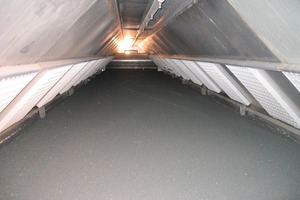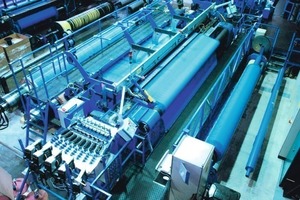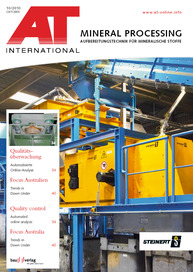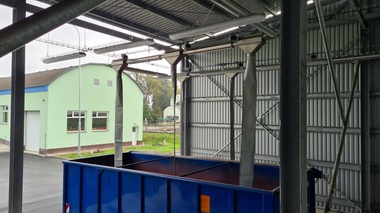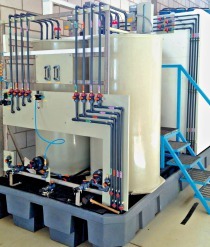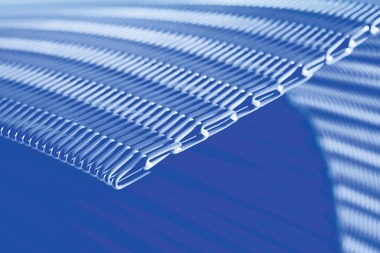Process belt technology boosts efficiency
Environmental protection regulations and the public’s growing environmental awareness necessitate alternative disposal possibilities for municipal sewage sludge. Especially thermal recycling, i.e. drying, combustion or co-combustion of municipal sewage sludge, is now increasingly accepted as a sustainable and therefore attractive solution. It is the calorific value of sludge that makes it so attractive: completely dried sludge (90 % dry content) has a calorific value similar to that of lignite (i.e. approx. 11 000 KJ/kg), making it well suited for use as secondary fuel in coal-fired power stations, waste incineration plants or as additional fuel in cement or clay brick plants.
To make sludge a valuable product, it must undergo special treatment. Andritz 3SYS AG supplies the technology for this, for example drum and fluid bed dryers as well as belt dryers for sludge drying. In the belt dryer, first a layer of wet sludge from 4-20 cm is evenly spread on a process belt (Fig. 1). The belt moves slowly forwards under a constant supply of hot air. During this process, the sewage sludge is slowly heated up by 100 -150 °C-hot drying air so the water it contains evaporates and is discharged with the dispersed air. Core component of the Andritz belt dryers are process belts from GKD – Gebr. Kufferath AG (Fig. 2), which optimally meet the specific requirements for the woven belt of the dryers. The belt material must withstand constant temperatures of 200 °C without any significant shrinkage and cover a pH range from 1-14. Of key importance are also the strength and abrasion resistance of the woven material as the sludge can contain sharp-edged particles. Following successful tests at Andritz, the company opted for the GKD PPS 5099 belt specially designed for this application.
The belt is woven from robust monofilaments and thermoset. It is used both as press and dryer belt material. The robust plastic woven mesh has a thickness of 2.20 mm and a weight of 1200 g/m2. The smooth weave surface, the 510 μm apertures and the air permeability of 700 cfm (= 1190 m³/min.) guarantee optimal dewatering of the sludge. Thanks to the strong weave, the belt can withstand even extremely high surface loads. The twill weave enables good product support and excellent cleaning. The process belt functions not only as a transport belt, but also as a filter medium. As the belt dryers from Andritz 3SYS AG are operated at underpressure, the dust produced by drying at the top is discharged as filtered air below the belt. The odour of this waste air is also limited thanks to the low drying temperatures.
With the use of sewage sludge as an alternative fuel, primary energy can be saved, which is a key argument in the ongoing debate on the reduction of CO2-emissions. In addition, Andritz 3SYS has developed a process in which the dried sludge is used as a fuel to generate the heat necessary for the drying process.
GKD – Gebr. Kufferath AG, Düren (D),
Tel.: +49 2421 803-0, www.weaveinmotion.de und

